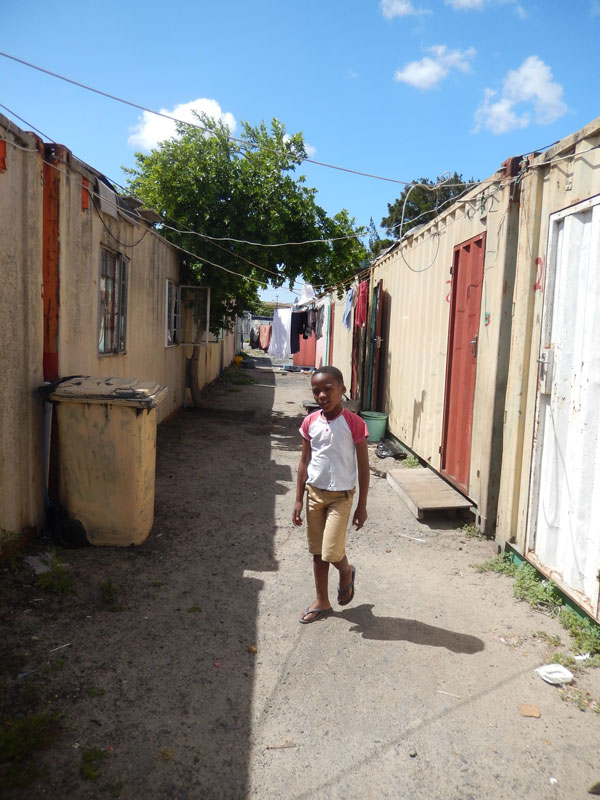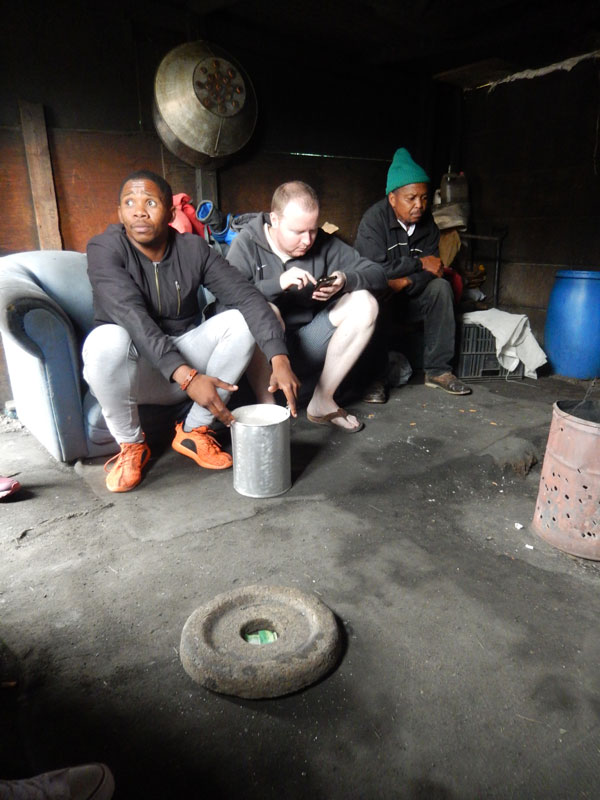The population of the greater Cape Town area currently stands at 3.7 million people, with the majority of these people living in various townships. Most townships were established in the last century by the Apartheid regime to enforce racial segregation of the non-white South African population, and to this day they mainly consist of informal settlements and underdeveloped urban living areas.
I went on a township tour in Langa. The establishment of Langa in the 1920’s predates Apartheid, and as such it is the oldest township in Cape Town. Although Langa itself means ‘sun’ in Xhosa, the township is named after Langalibalele, a historical Xhosa king. As we were walking past a traffic sign spelling out the full name our guide challenged us to pronounce this, and he was amused as we all ended up with twisted tongues.
Our tour started off in the brand new community center. We were explained how a pottery studio tries to teach young people professional skills and we were introduced to some local craftsmen and artists who make a living by selling various pieces of artwork.
After that our guide led us out on the streets for a walking tour through Langa. While he regaled us with animated tales about how tribal traditions remain a crucial part of the transition from boyhood to adulthood and his lamentations about the current state of affairs in South African politics, our surroundings slowly started to change. At first we were walking along the main road where there were barely any residential buildings. After we took a turn into narrower side road the neighborhood changed as the street was flanked on both side by small food shops. When we arrived at the square at the end of the street our surroundings changed again, as this square was full of shipping containers that serve as people’s houses. Each shipping container houses two families, with a wall in the middle of the container dividing it into two individual compartments. Besides a bed, a TV mounted to the wall, and a small stove there was barely any space to move inside the container, and yet an entire family would live there.

As we continued from the square living conditions only seemed to decrease further. Now we were no longer following paved roads but rather we were walking between makeshift shacks constructed out of wooden pallets. We were invited into a small house (by lack of a better word) that serves as a girl’s orphanage. On this Sunday morning all the girls were out to church, and I could not imagine how over ten girls could all live together in such a small building. Next, we visited a communal tavern, where a few men where sitting on old sofas and wooden stools while an old woman was preparing a kind of local beer in the middle of the small room. The beer was being brewed in a big pot, and when it was deemed ready this pot made the rounds through the room and everyone was encouraged to awkwardly take a big gulp directly from the pot. The tavern we visited was very calm, with most men seemingly deep in thought and silently enjoying their beer. However, as we continued our walk we passed by a few other taverns where some vigorous dancing was going on. Also, some people were sitting outside in a clearly inebriated or possibly even high state, despite the early morning hour. These people seemed to need an escape from their daily struggle, and although we never felt unsafe in the presence of our guide who was clearly a well-known local figure, this was not a neighborhood I would be comfortable traversing on my own.

We soon left the most dilapidated neighborhood though, and during our entire visit to Langa people were always very friendly. When we were at the shipping container homes earlier the young boy in the picture walked straight up to me after which he used some hand signals to make me understand that he wanted to take some pictures himself. After checking the photos afterwards I am afraid that he still needs a bit more practice before he can be considered to be an expert photographer, but his natural and joyful demeanor was charming. Also, when we visited a saleswoman of boiled sheep heads her two small kids were delighted to see us and started dancing and running circles around the group. The people we met were invariably smiling and welcomed us with open arms into their homes and daily lives.

It was a moving experience to visit the Langa township, and a harsh illustration of the remaining big divide in social standing between ethnic groups in South Africa. Yet, despite the hardships of their lives these people make do with the things they have and they seemed genuinely upbeat and happy. Nevertheless, I could not help but be dismayed by how they are forced to live, and it made me appreciate all the more just how fortunate I am.